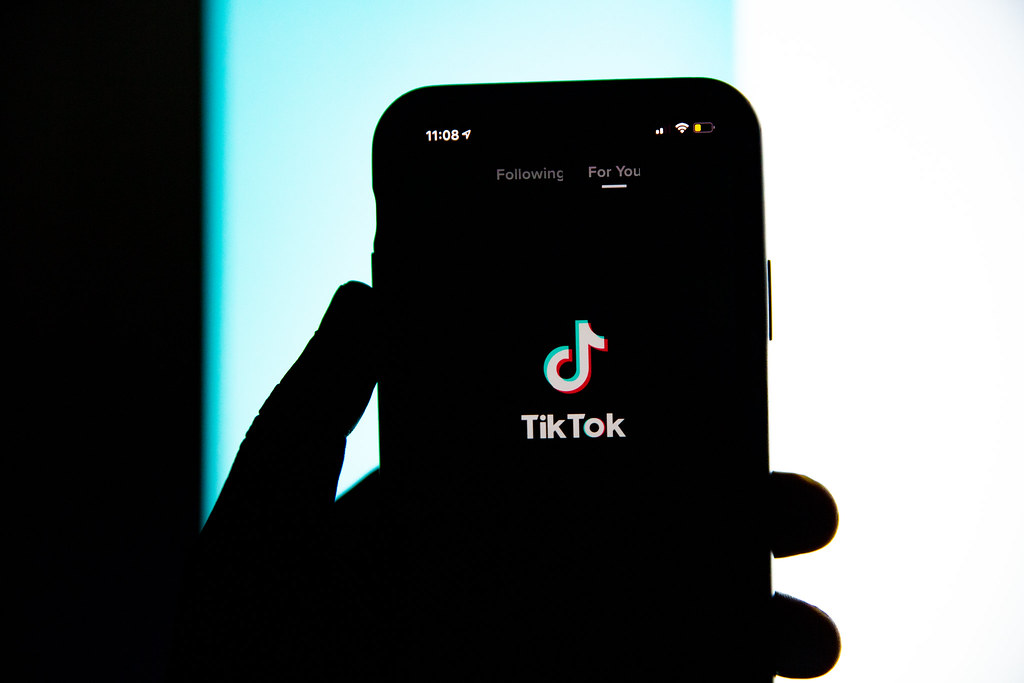TikTok Ban Timeline

Image from Creative Commons
In 2016, an internet technology company known as ByteDance created an app named A.me. The app intended to provide an accessible platform where users can create and share original video content. Three months later A.me was renamed to “Douyin,” (抖音 dǒuyīn) which translates to movement in sound or “shaking music.”
In 2017, ByteDance took the app to the global market and officially changed its name to the famous TikTok the public is familiar with today. ByteDance integrated some of Musical.ly’s most effective features into the functions of TikTok thus aiding in the evolution of the app. In the late 2010s, TikTok saw unprecedented growth. By Dec. 2019, the app reported having 508 million monthly active users. By 2021, TikTok, developed the power to create overnight fame and success with acts such as British artist PinkPantheress and American artist Olivia Rodrigo.
In 2020, India became the first country to officially ban the popular social media app across the country. As part of a larger effort to protect against potential privacy violations, TikTok along with 58 other apps were legally prohibited within India. This national ban of TikTok was a quick reaction to the events of intense political tensions regarding a border dispute. The Line of Actual Control provided legislation regarding the borders between the two countries. However, due to the natural landscape of the two countries, the legislation left borders murky. This problem escalated tensions leading to attacks being cited as “the deadliest violence between the two countries in 45 years.”
In 2020, the Trump administration called for a total ban of the popular social media app. The main issue surrounded the topic of national security reflecting similar sentiments of the Indian government. However, the call for a ban was at first dropped by the succeeding president’s administration. On Sep. 27 2021, it was announced that TikTok reached 1 billion global users, which accounts for roughly one seventh of the human race.
In 2022, discussions of banning the app in the United States began to make appearances on congressional bills. In Dec. 2022, a bill was proposed with the intention to remove the app from all government devices. The New York Times explains the main fear surrounding the technology of TikTok is “federal officials have also expressed fear around how China could use the app to sway Americans through videos delivered through TikTok’s algorithm that pushes highly tailored videos to users based on their profiles and interests. Christopher Wray, the F.B.I.’s director, warned last month that the Chinese government could use TikTok for ‘influence operations,’ or try to use the app to infiltrate and compromise devices, presenting a plethora of security and privacy issues. United States government officials often cite Chinese legislation arguing that it allows for contentious private information to be given out.
Evidence of such an issue surfaced in Dec. of the same year. After an investigation into the technology of TikTok, there was proof that the company had unprofessionally obtained private information regarding two American journalists. The ByteDance employees held responsible for the gathering of the information were fired. ByteDance actively worked to remove any remaining access to American users’ information from that department.
TikTok tried to remove itself from the accused parent company of ByteDance by establishing various offices across the world in places such as New York and Singapore to signify such a shift. However, the U.S. government remains skeptical of the company.
Following the lead of various European governments, in Feb. 2023, the Biden administration sent an ultimatum. The administration expressed that federal agencies had exactly 30 days to remove the app from official government devices. By March 1st, the U.S. House Foreign Affairs Committee voted to further support legislation allowing for Biden to fully ban TikTok on a national scale within the United States.
Currently, the main focus of the Biden administration is to argue for the sale of TikTok rather than its complete and total ban. However, state level government officials have forwarded the fight toward banning TikTok. States such as Maryland, South Carolina, Oklahoma, and Texas amongst others have created bans while using the app on state government devices.
- Categories: